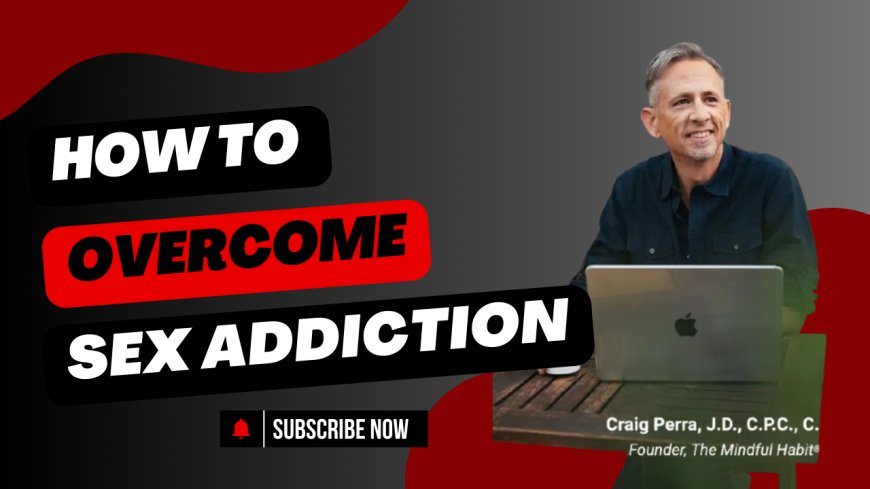Sex Addiction in the Shadows: Identifying Signs in Teens and Young Adults
Sexuality is an essential part of human life, but when it becomes compulsive and uncontrollable, it can spiral into addiction.

Sexuality is an essential part of human life, but when it becomes compulsive and uncontrollable, it can spiral into addiction. While the term “sex addiction” is often associated with adults, teens and young adults are not immune to its grip. In fact, the digital age has made access to sexually explicit content alarmingly easy, blurring the lines between exploration and compulsion.
Understanding how sex addiction manifests in younger generations is crucial for early intervention and support. Here, we explore the hidden signs of sex addiction in teens and young adults, focusing on behaviors that may go unnoticed but signal a deeper issue.
Why Teens and Young Adults Are Vulnerable
Adolescence and early adulthood are periods of exploration and identity formation. With the ubiquity of smartphones, social media, and online pornography, young people are constantly exposed to sexualized content. Combined with hormonal changes and the pressures of fitting in, these factors create a perfect storm for addictive behaviors to take root.
Additionally, the brain’s reward system during this phase is highly impressionable. Dopamine surges triggered by sexual content or behaviors can create a feedback loop, encouraging repeated actions to achieve the same high. Over time, this can lead to compulsive patterns that interfere with emotional well-being and relationships.
Hidden Signs of Sex Addiction in Teens and Young Adults
-
Excessive Screen Time with Secretive Online Behavior
While many young people spend hours on their devices, those struggling with sex addiction may exhibit secretive behavior, such as quickly closing tabs, using incognito mode, or hiding apps. Excessive time spent on adult sites, dating apps, or social media with explicit content could signal a deeper problem. -
Withdrawal from Social Activities
Teens and young adults addicted to sexual behaviors often withdraw from real-life social interactions. They may skip events, avoid friends, or become reclusive to prioritize their addictive behaviors. -
Mood Swings and Irritability
Addiction thrives on a cycle of highs and lows. Young people may display sudden mood swings, irritability, or anxiety when unable to engage in their compulsive behaviors. -
Decline in Academic or Work Performance
A noticeable drop in grades, skipped assignments, or frequent absences from work or school can be a red flag. The addiction consumes mental energy, leaving little room for other responsibilities. -
Risky Sexual Behavior
Engaging in unsafe or impulsive sexual activities, such as unprotected sex, multiple partners, or meeting strangers from dating apps, is another indicator. This behavior often stems from a lack of impulse control and an overwhelming urge to act on sexual compulsions. -
Shame and Guilt
Teens and young adults may experience intense shame or guilt about their behaviors. This emotional turmoil can lead to secrecy, lying, and even self-destructive coping mechanisms like substance abuse. -
Preoccupation with Sexual Content
A constant fixation on sexual topics, jokes, or images—even in inappropriate settings—may signal an underlying compulsion.
The Role of Parents, Educators, and Peers
Recognizing these signs requires sensitivity and an open mind. Parents, educators, and peers play a pivotal role in identifying potential issues. Here are some strategies to provide support:
- Foster Open Communication: Create a safe space where teens feel comfortable discussing their struggles without fear of judgment.
- Educate About Healthy Sexuality: Provide age-appropriate information about healthy sexual behavior and boundaries.
- Monitor Digital Usage: Without invading privacy, guide responsible online behavior and address concerns about excessive screen time.
- Encourage Professional Help: If the signs persist, suggest seeking a counselor or therapist specializing in addiction and adolescent behavior.
Breaking the Stigma
Sex addiction in teens and young adults is often overshadowed by stigma, preventing many from seeking help. By recognizing the signs and taking proactive steps, we can intervene early and provide the support necessary for recovery.
Sexual health and emotional well-being are intertwined, and addressing addiction is not about shaming but empowering young people to regain control over their lives. In the end, awareness and compassion are the first steps toward healing.
Final Thoughts
Sex addiction in teens and young adults is a growing concern that thrives in the shadows of ignorance and stigma. By shedding light on this issue and understanding its signs, we can help those affected break free from its grip and lead healthier, more balanced lives.
